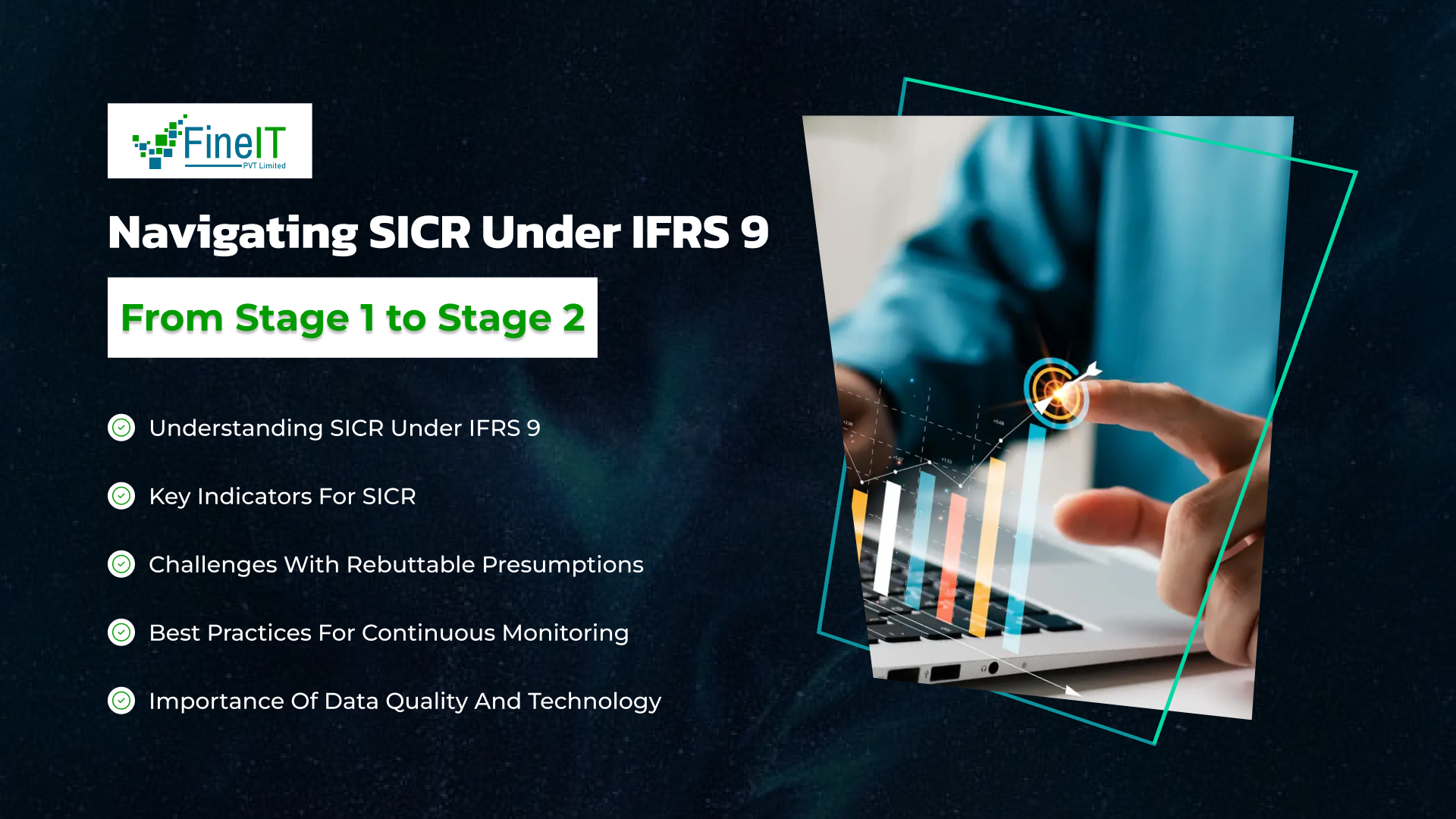To expand on the topic of Significant Increase in Credit Risk (SICR) and its implications under IFRS 9, I will provide a more detailed analysis that builds on the existing article, emphasizing both the quantitative and qualitative indicators, the importance of continuous monitoring, and practical challenges in real-world applications.
Expanded Analysis on SICR and Transition from Stage 1 to Stage 2 under IFRS 9
1. Overview of IFRS 9 and SICR
IFRS 9 introduces a three-stage approach to classifying financial assets based on their credit risk. Understanding when to move assets from Stage 1 (performing) to Stage 2 (under SICR) is critical, as it significantly affects how Expected Credit Losses (ECLs) are calculated. ECLs in Stage 1 are calculated on a 12-month basis, while in Stage 2, they cover the asset’s lifetime, impacting the financial statements.
2. Factors for Identifying SICR
Determining whether a SICR has occurred involves analyzing both quantitative and qualitative factors:
- Quantitative Triggers: Changes in credit ratings, significant deterioration in financial ratios, increased past-due days (such as the 30-day rule), and breaches in covenants are common quantitative indicators. Regular monitoring of these factors helps in proactive credit risk management.
- Qualitative Factors: Broader economic changes, regulatory shifts, or sector-specific challenges might also indicate SICR. For example, a forecasted economic downturn could signal a SICR for many assets.
3. Rebuttable Presumptions and Practical Challenges
IFRS 9 allows for rebuttable presumptions where certain triggers, like the 30-day past-due rule, can be contested by banks if sufficient evidence suggests no significant risk increase. However, this creates practical challenges in documenting and justifying the rebuttal, requiring robust internal processes and expert judgment.
4. Continuous Monitoring and Dynamic Updates
Regularly reviewing the credit risk status of assets is essential to avoid sudden portfolio downgrades that can lead to large, unexpected provisions. Many institutions are now using advanced analytics and machine learning models to continuously monitor a wide range of indicators that could suggest a SICR.
5. Implementation and Best Practices
- Data Quality and Availability: Institutions need high-quality, timely data to make accurate assessments of SICR.
- Cross-Functional Coordination: Teams across risk management, finance, and compliance need to collaborate closely to ensure all relevant information is captured and analyzed.
- Technology Utilization: Leveraging technology to automate data collection and analysis can reduce the manual effort and improve accuracy.
Conclusion and Future Outlook
Successfully navigating the transition between Stage 1 and Stage 2 under IFRS 9 is essential for financial institutions to manage credit risk effectively. By understanding the nuances of SICR, implementing best practices, and continuously monitoring credit exposures, institutions can better manage risk and meet regulatory expectations.
Further Reading
For more details on this topic, you can refer to the original article: Significant Increase in Credit Risk (SICR): Navigating the Transition from Stage 1 to Stage 2 under IFRS 9.



